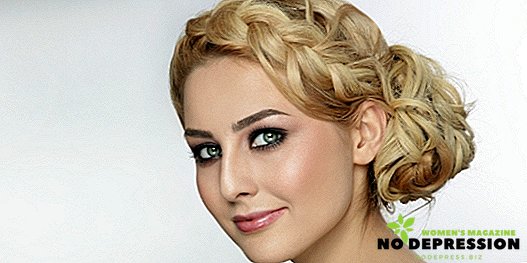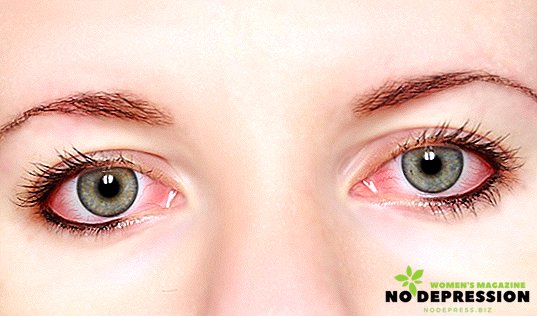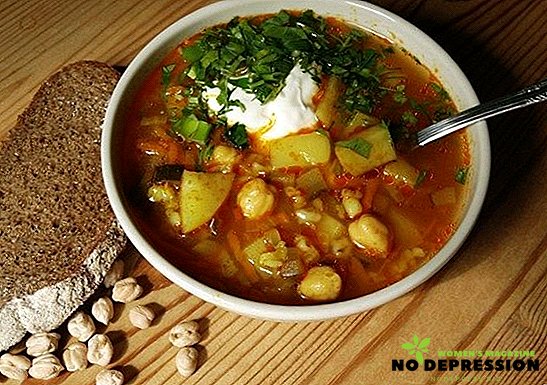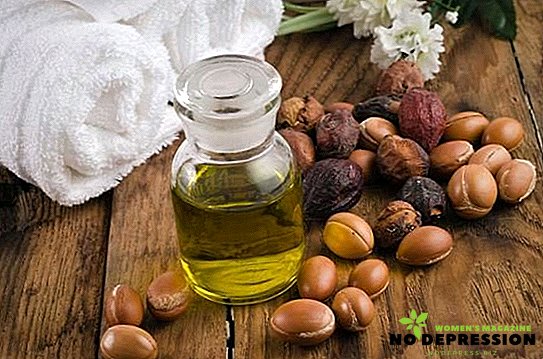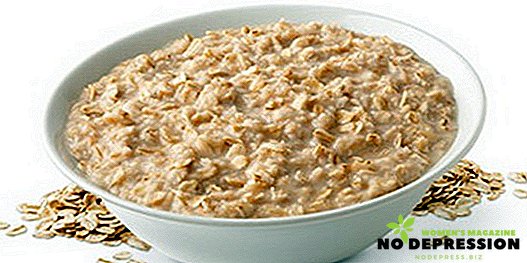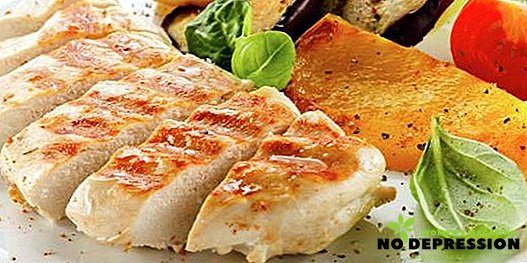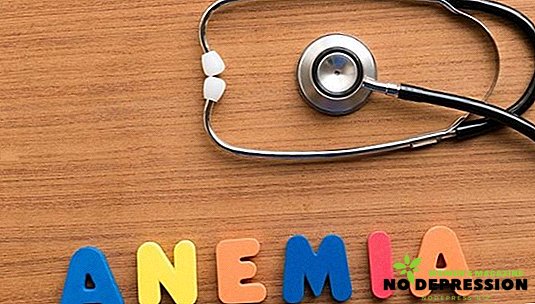Psoriasis on the face is considered one of the most unpleasant diseases, because in addition to discomfort, pain, a person also experiences tightness, isolation. With the wrong treatment of this disease, scars may remain on the face. Because it is so important to recognize the problem in time and start therapy.
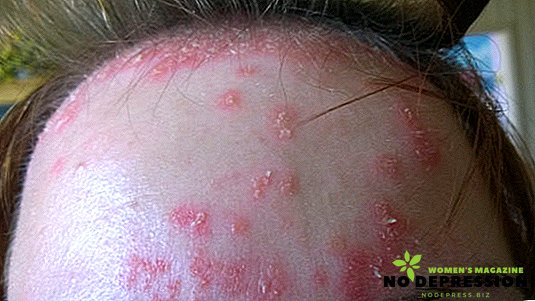
Features of the disease and what causes psoriasis?
Psoriasis on the face is less common than on other parts of the body. Typically, the disease is localized on the elbow or knee joints, in the armpit, on the palms, feet, and in the scalp.
In a healthy person, the cells of the epidermis are renewed for about a month, this is an absolutely normal process. However, with psoriasis, it is accelerated many times, and the skin is renewed every 5 days. As a result, the inflammatory process develops, since the immune system perceives the accelerated appearance of new cells as "aggressive agents." This leads to the accumulation of leukocytes and red blood cells at the lesion.
Doctors can not say with 100% certainty what the cause of psoriasis is. The mechanism of formation of papules and plaques is still not fully understood. But according to the opinion of scientists and physicians, such causes of illness are highlighted, such as:
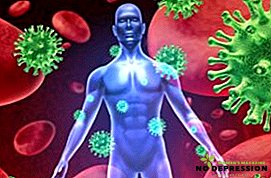 Genetic predisposition. According to doctors, heredity is the main factor. According to statistics, about 60% of patients with psoriasis reported that their relatives had the same disease.
Genetic predisposition. According to doctors, heredity is the main factor. According to statistics, about 60% of patients with psoriasis reported that their relatives had the same disease.- Disruptions in the immune system, which can be caused by various factors.
- Disorders in the organs of the endocrine system.
- Damage to the skin.
- Constant stress, which can cause rashes.
In addition, poor nutrition, medication without consulting a doctor, bad habits can lead to psoriasis.
Stages of psoriasis and signs of appearance on the face
Depending on the type of illness, psoriasis can occur in different ways.
Initial
In this case, the skin may appear light pink rash with a diameter of 3 mm. Gradually, the number of lesions begins to increase, small spots merge, which leads to the formation of plaques. Over time, around these spots, the skin begins to redden and inflame, itching appears, plaques begin to peel off.
It is important to carry out diagnostic measures in time, to determine psoriasis, because at the initial stage this disease resembles allergy. And with illiterate therapy, pathology begins to develop rapidly.
Stationary
This form is characterized by stability. New rashes are usually not present, itching gradually decreases, desquamation decreases.
Regressing
 At this stage, itching and peeling no longer exist, plaque crusts are separated from the skin, which leaves light pink spots on the skin.
At this stage, itching and peeling no longer exist, plaque crusts are separated from the skin, which leaves light pink spots on the skin.
In medical practice, there is such a thing as seborrheic psoriasis on the face. This disease is quite serious, affects not only the new areas of the face, but also the hair. Pathology extends to the forehead, temples, neck. One of the frequent complications is the addition of a fungal infection that affects the sebaceous glands. The combination of these factors aggravates the course of the disease and complicates therapy.
According to statistics, most patients do not know how to treat psoriasis on the face, but at the same time they choose medicines themselves. In most cases, this only aggravates the course of the disease.
Methods for the treatment of facial psoriasis
To eliminate the symptoms and quickly achieve results with such an unpleasant disease, treatment should be comprehensive. At the same time, it is important to influence not only the plaques themselves, but also the internal factors that could cause a rash.
Drug therapy
In the treatment of psoriasis on the face prescribe funds for both external and internal use. Moreover, the dosage and treatment regimen is determined only by a specialist, given the severity and stage of the pathology.
The table shows the most effective medicines:
| Title | Therapeutic effect |
| Exterior products | |
| Elokom | Helps to reduce the size of papules. |
| Kartalin | After its application, the plaques soften, which greatly facilitates their removal. |
| Naftalan | The ointment has an analgesic effect, reduces inflammation. |
| Psoryl | Fights itching, accelerates skin healing. |
| Acrustal | The cream contains a large amount of vitamin D. Accelerates the recovery of the skin. |
| Triderm | The ointment helps to get rid of itching, relieves inflammation. It should be used as carefully as possible, since it refers to hormonal remedies. |
| Means for oral administration | |
| Laminin | The tool accelerates the process of cell regeneration of the epidermis, stimulates the production of collagen. |
| Folic acid | Helps to effectively cleanse the skin, eliminate pigmentation. |
| Novopassit | Allows you to relieve psychological stress. |
| Psoryl | The remedy relieves itching and has anti-inflammatory effect. |
| Lecithin | Allow to reduce the duration of relapse. |
| Methotrexate | It has a depressant effect on pathogenic cells. |
Additionally, you can assign mineral-vitamin complexes.
Physiotherapy
In order to provide a more effective treatment, in addition to medications, physiotherapy can also be prescribed.
In the treatment of psoriasis on the face, the following methods are commonly used:
- Ultrasound. Under the influence of ultrasonic vibrations, itching is reduced, the inflammatory process is reduced.
- Ultraviolet. It has the same properties as ultrasound.
- Electrosleep. With constant itching and emotional stress, sleep worsens significantly. Sessions have a powerful sedative effect - the patient will be able to relax and rest. Also, quality sleep allows the body to more effectively deal with the disease.
A method such as mud applications is also popular: a healing tool helps to remove plaques and improve skin condition.
Face cleaning
When conducting daily hygiene procedures, the effectiveness of treatment will be much higher. When psoriatic lesions appear, it is recommended to stop using face scrubs or salon cleaning. To improve the effectiveness of therapy, you should use special tools that will help prevent flaking and dry skin.
It is worth remembering: you need to take any drugs only after consulting with a specialist.
One of the best remedies is La Cree. It can be purchased in various forms:
- Cleansing gel that is great for daily washing. It is characterized by hypoallergenic properties. As part of the gel: avocado oil and olive, extracts of nuts and licorice. Such components can relieve irritation and moisturize the skin.
- Cream. The composition is natural without any parabens, hormones, fragrances. The use of tools will eliminate the itching, flaking of the skin. There is no effect of addiction, because you can use the cream on a regular basis.

Features of a hypoallergenic diet for psoriasis
Patients with any stage of psoriasis are required to remember the need for an alkaline diet. Patients are required to include in the diet foods that alkalify the internal environment. Their share should be at least 65%, the rest is acidic food.
There are some general tips:
- One third of the diet - unprocessed fruits and vegetables. It is necessary to consume cabbage, beets, greens, celery, garlic, etc.
- In the diet should also be complex carbohydrates and natural sweets, but only in limited quantities.
- Consume cereals, dried fruits, proteins (animal, vegetable).
- Eat meat, fish (lean species), beans, eggs, nuts, seeds.
- On the day it is recommended to drink at least 1.5 liters of pure water.
- Alcohol is recommended to exclude.
In order for the treatment to be effective, you need to remove fatty dairy products, chocolate, citrus fruits, smoked and spicy foods from the diet.
Traditional medicine - what can I use?
It is important to remember that treatment with traditional medicine is possible and effective only if they are used in remission. When exacerbated, they can also be used, but together with medicines, which will allow to achieve a positive result much faster.
The use of folk techniques will reduce inflammation, reduce itching, improve immunity. There are several proven tools:
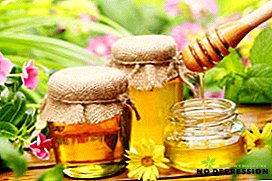 Dead Sea salt. You can make compresses or just sprinkle with saline on the affected skin.
Dead Sea salt. You can make compresses or just sprinkle with saline on the affected skin.- Bee Honey. This product helps to quickly eliminate the rash. Usually prepare the ointment on the basis of honey. To make it you need to mix 1 tsp. oils of eucalyptus, honey and juice Kalanchoe. The composition is kept for three days in a dark place, after which it should be applied to the affected areas.
- Healing herbs. Compresses and lotions on herbal decoctions are most effective. With their help, you can reduce itching, relieve inflammation. It is best to use aloe, lavender, primula.
- The fruits of raspberry or wild rose. In the treatment of psoriasis on the face can not do without these berries. They help strengthen the immune system, increase the body's resistance to viruses and infections.
Preventive measures for psoriasis
After treatment and elimination of the manifestations of psoriasis, it is very important to remember about preventive measures. They will help to prolong the period of remission and prevent the appearance of new lesions.
There are pretty simple rules to follow:
- follow a diet, switch to proper nutrition;
- avoid stressful situations;
- do not allow hypothermia or overheating;
- take vitamins, especially D and A;
- use moisturizers for skin care;
- detergents should be based on natural ingredients (it is best to choose those that contain Dead Sea mud components);
- prevent damage to the skin, if this happens, you need to handle the place Chlorhexidine.
Faced with such a disease, you need to remember - to get rid of psoriasis once and for all it is impossible. And in order to eliminate the rash and plaque, one cannot do without complex treatment and preventive measures.
Features of treatment in children
When treating children, it is not recommended to use folk remedies. They are not always effective, and delay in therapy is unacceptable. At the initial stage of psoriasis, you need to contact a dermatologist, who will prescribe a comprehensive examination, diagnosis and treatment.
If the disease has spread, the children are often prescribed a means of local action: keratolytics and anti-inflammatory.
The scheme is approximately as follows:
- The top layer of the plaque is removed, for which salicylic ointment is used. A bandage is applied to the affected area, it is removed at least three hours later.
- Then the child must take a bath with a string, which will remove the crust without discomfort.
- The last stage is the application of the drug (cream or ointment) with glucocorticoids. The dosage must be prescribed by a doctor.
Additionally, vitamins and antihistamines can be used.


 Genetic predisposition. According to doctors, heredity is the main factor. According to statistics, about 60% of patients with psoriasis reported that their relatives had the same disease.
Genetic predisposition. According to doctors, heredity is the main factor. According to statistics, about 60% of patients with psoriasis reported that their relatives had the same disease. Dead Sea salt. You can make compresses or just sprinkle with saline on the affected skin.
Dead Sea salt. You can make compresses or just sprinkle with saline on the affected skin.
